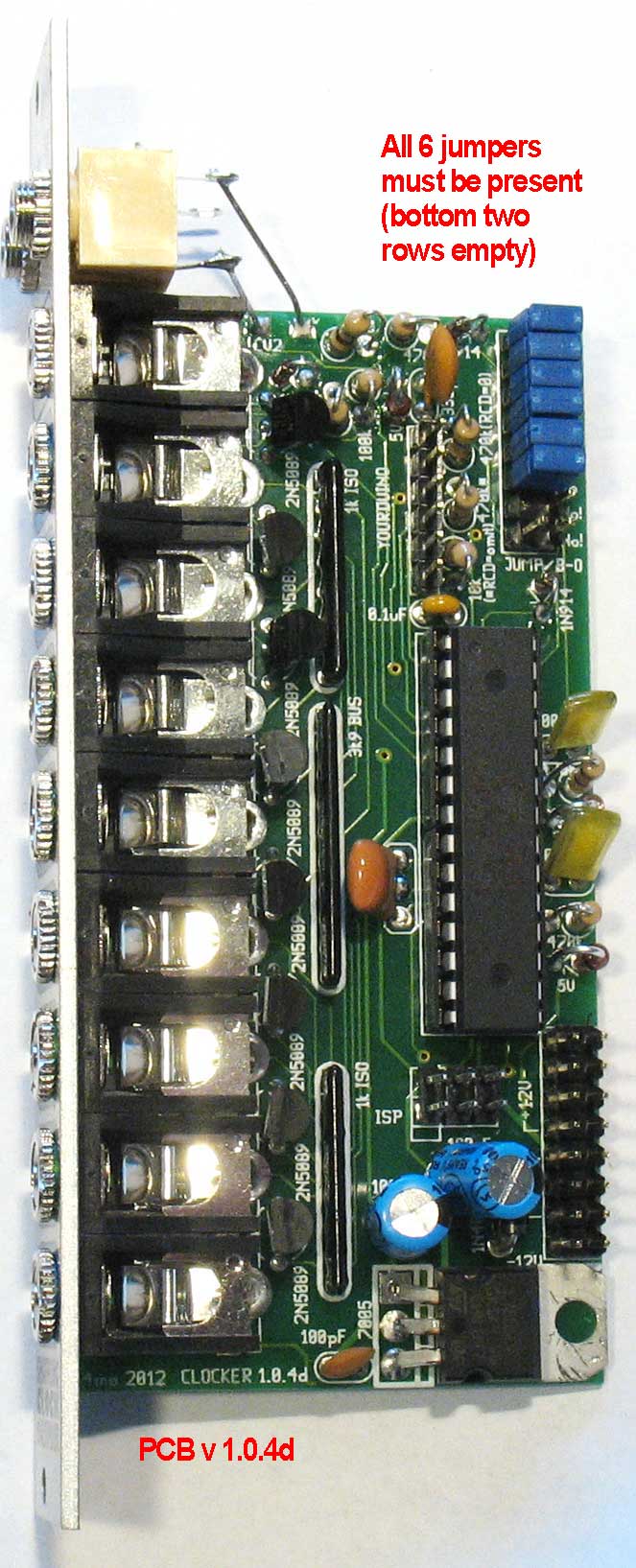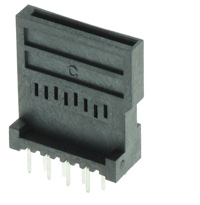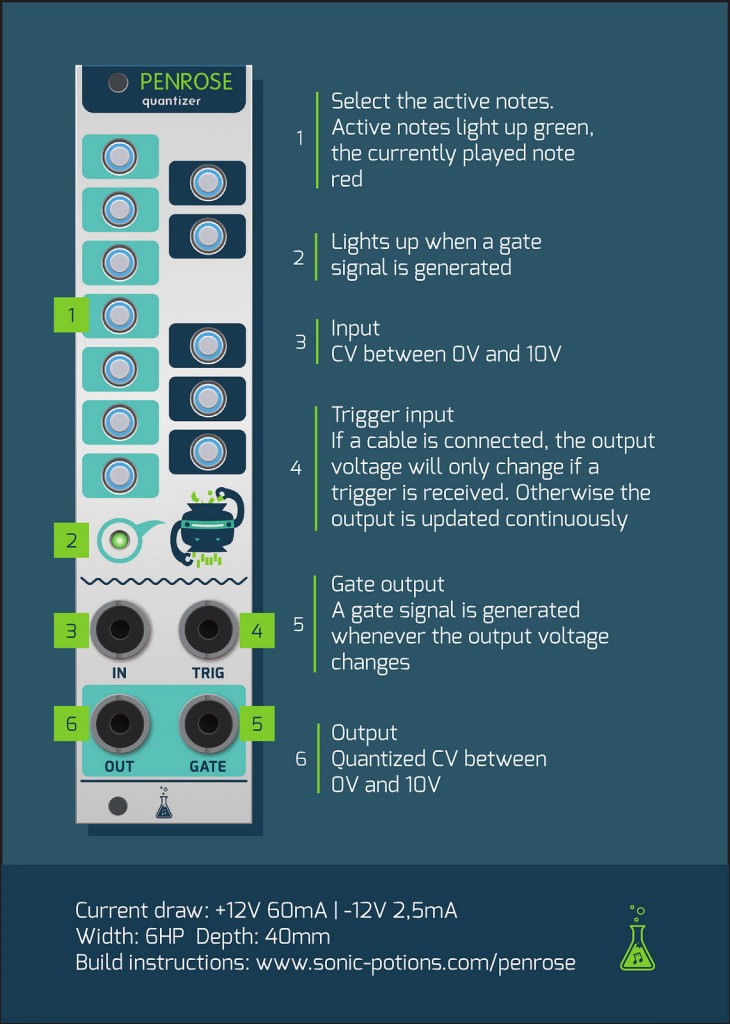Note: This is a single PCB & Programmed Firmware Chip, for Full DIY Kit go here
Connectivity
Power In: 7-15VDC, tip positive (Don’t reverse it or it will get mad). Just find a voltage source on your synth somewhere. If the notes being played by the sequencer seem flat, the power supply you have chosen may be dropping too much under load. If you can’t or don’t want to use your synth to power the sequencer, you can use a 9V Battery or AC power supply.
Clock In: 0-5V is ideal, but going outside that range won’t hurt it. Step will advance on rising edge.
CV Out: 1 volt/octave, C=1V/2V/3V. Connect to the CV in on your oscillator (or filter or whatever)
Gate Out: On=+5V. Plug this into your VCA, EG, etc. Gate timing follows the clock when the sequencer is running, buttons when in Ready mode, and stays on while programming.
Operation
Push Run to start playing a sequence. The true green Run LED will light to tell you that you are in Run mode. Push it again to Pause. The sequencer steps can be programmed while paused.
Push reset to stop the sequence, go to step 1, and enter Ready mode. The blue step LED will blink to let you know that you are in Ready mode. This means that when you press Run again, the sequencer will play step 1 on the next clock pulse instead of skipping it and going to step 2.
If you want to start on a different step, you can use the step left and right buttons to pick a different one.
While in Ready mode, you can use the note buttons to manually play tunes without messing up the sequence you have stored in memory. Gate timing will follow your button presses.
Programming is done while the step LED is steady (not Ready mode) and the sequencer is not running. You can enter Programming mode by pressing Reset a second time, or pausing a sequence with the Run button. Use the step left/right buttons to pick which step you want to program, then press the note you want that step to play. The new note is automatically stored in non-volatile memory.
Remember about the step LED:
Blinky = Ready Mode = Will start on selected step = Can play keyboard live
Steady = Programming = Any notes you push will get saved in that step
The sequencer keyboard covers 3 octaves, so you can use the octave up/down buttons to transpose the keyboard up and down. The green and orange LEDs will tell you which octave the keyboard is currently set to.
In addition to standard notes, you can also program a Rest or a Loop command into a step. A Rest step holds the previous note and doesn’t fire the gate. Loop makes the sequencer go back to step 1. You can use this to create any length sequence you want. For example, if you only want steps 1-13 in your sequence, you would make step 14 a Loop step.
Starting with firmware version 1.1, the sequencer operates with a built-in clock from power-up until it receives its first external clock pulse. The internal clock rate can be adjusted up and down while the sequencer is running using the step buttons. Once the unit has switched to external clock mode, the internal clock can be restored by holding down the reset button for about 2 seconds (soft reset) or removing/restoring power to the unit.
Build Document & BOM – Sequencer Build Doc




